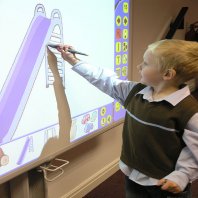Just a quick post today as I attended the Digital Education show in Dubai at which there were some excellent guest speakers however they are not the focus of this particular blog entry. The focus of this blog entry was the educational technology visible on the show floor where various IT vendors hoped to sell schools learning management systems, datashows, interactive whiteboards, student voting systems, learning content and all manner of other tech. IT vendors must hope that schools are in search of something that will impact on their school, and that they will wander around the stands of edtech in search of that something. I saw demonstration after demonstration of flashy functionality or capability, of various hardware and/or software solutions
The issue is that the purchasing of edtech will not bring about improvements as tech is nothing more than a tool. It relies on the person wielding the tool and it relies on the purpose to which the tool is being applied. So if the purchasing of tech is on the basis of the tech and what it can do as according to the expert demonstrator, without consideration for who the users are and the purpose for which they are using the tech, then it is doomed to have only limited success at best.
Schools need to look towards the purpose of tech use. What do they hope to achieve with tech? What will tech use look like in their specific classrooms with their specific students? How will tech impact on students and learning? What constraints on tech use exist in their school? How will the adoption of tech by staff be encouraged and supported? How will tech use be supported and maintained over time?
In addition to schools rethinking their approach to tech maybe vendors need to relook at their approach as well and instead of showing what their tech can do, focus on showing off the purpose of their tech and the impact it can have on schools.









